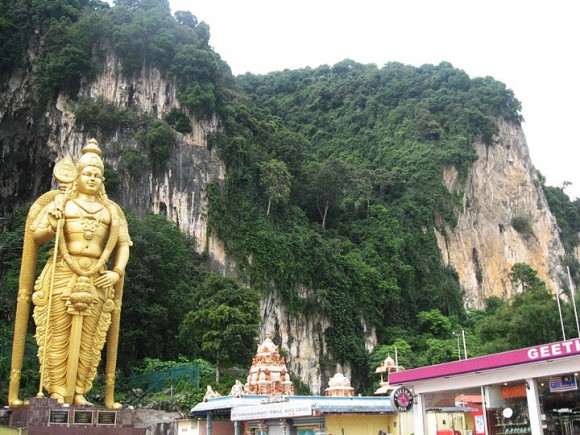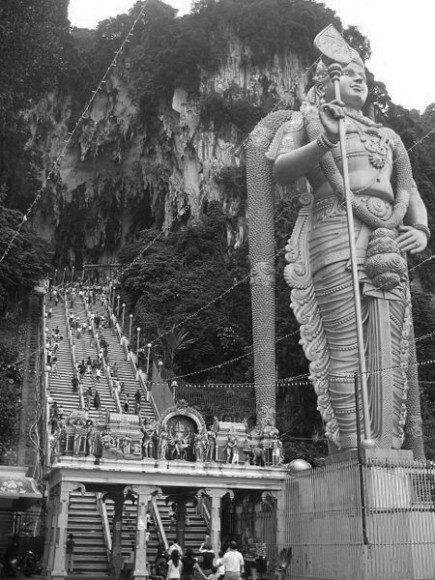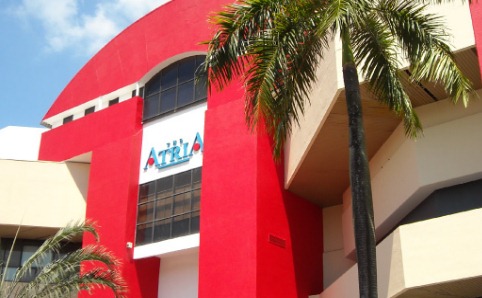
A LOT of accusations and allegations have been made in the recent case of the condominium development near Batu Caves. On one hand, the current Pakatan Rakyat (PR) Selangor government has accused the former Barisan Nasional (BN) government of approving the Dolomite Park Avenue condominium project. This was why, they said, the PR government allowed the project to continue.
The BN’s response was that they only gave planning approval, which isn’t a development order. According to the BN, the Selangor government had every right to stop the project if it wanted to. The BN also noted that approval to build the condominium was given on 26 June 2008, after the PR had come into power in Selangor.
Which coalition is telling the truth? What’s the difference between a planning approval and a development order? And what else aren’t they telling us?
Planning permission
The approval that the BN government gave is called a “planning permission”. The Town and Country Planning Act describes the process in which a planning permission is applied for. The extensive plans that need to be submitted for this planning permission include a geotechnical report and a survey of all forms of vegetation and trees. It also includes a land use analysis and its effects on adjoining land.
The developer must also submit “layout plans”, which include measures for the protection and improvement of the land’s physical environment and the trees in the area, and the allocation of public parks. If the application does not violate any of the automatic rejection clauses, the local council can grant planning permission either absolutely or subject to such conditions as it thinks fit. The council can also consult residents and ratepayers before giving this approval.
This entire process only deals with the submission of technical documentation and studies, with proposals based on those submissions. Planning permission is approved when these documents are in order. Hence, approvals given at this stage do not yet constitute permission to carry out development works.
Take, for example, the planning permission given by the Petaling Jaya City Council (MBPJ) to redevelop the PKNS building in Section 52, PJ. Among the conditions the developer had yet to obtain at the time of approval was:
(B) xiv. Merujuk serta mendapatkan kelulusan dari JKR Selangor bagi tambahan satu lorong di interchange bersebelahan PJ Hilton dari arah KL ke Jalan Barat.
Land conversion
The next step is land conversion, which is covered under the National Land Code. In most cases, land earmarked for development is categorised for agricultural use. Or a land owner with land meant for residential use may want to build something bigger and convert the land use for commercial purposes.
At this stage, the prepared and submitted plans detailed above must be presented to the state government’s Land Office for further deliberation. If the government denies the land conversion at this stage, the development cannot proceed.

On the other hand, if the land conversion is approved, the developer must pay a premium for land conversion. This premium is calculated based on the number of units and the type of units that will be built, minus the portion of land that will be surrendered to the government for public use. Land lot numbers for all the units to be built and for designated public spaces are also assigned at this stage.
It is important to note here that once this premium is calculated and paid, the development plans cannot change. This is because any attempt to add structures or units would mean that the developer is cheating the government out of the premium it deserves.
In the case of the Batu Caves condominium, I am made to understand that the land was originally mining land. So, land conversion had to happen before the development could proceed.
Permission to build
Once all that is done, the developer needs two things. One, a developer’s licence from the Housing and Local Government Ministry as stipulated under the Housing Development (Control and Licensing) Act. And two, a development order from the local council, as stipulated under the Streets, Drainage and Building Act, to proceed with actual construction.
At this stage, details of the buildings to be constructed are submitted to the local council engineers for approval. Control of the construction site, passage of heavy vehicles, and even limitation of construction hours are some of the conditions that the local council can impose on developers.
Since the approval to build the Batu Caves condominium was reportedly given on 26 June 2008, this suggests that the double-checking of facts, the project’s viability, and land use conversion were already completed at this juncture.
Show me your vote
From a technical standpoint, if due process had been followed, the PR government would have no problems whatsoever in explaining why they approved the development order for the Batu Caves condominium. They would also not have any need to blame the previous government for the earlier planning permission.
A commission to study the matter is also unnecessary if all the technical departments had done their job and were able to provide the justification for their decisions at a moment’s notice. (Side rant: if you need an independent commission to check the work of your own staff, you are in serious trouble.)
Apart from that, what we also have are both political coalitions promising to cancel the project. Clearly, because the Indian vote matters in what will be a hotly contested impending general election, neither coalition can risk the ire of the Batu Caves temple committee and their supporters.
Here’s the thing though – both the BN and PR have been coy about how exactly they will cancel the development and what the cost will be to ratepayers.
From BN to PR
To understand how things can go quite wrong, it would be instructive to direct our attention to Damansara Jaya, where the Atria Shopping Centre used to stand. During the 2008 election campaign, Tony Pua and Dr Cheah Wing Yin brandished MBPJ meeting minutes at their ceramah to show that the BN had approved the redevelopment of the shopping centre, which residents were unhappy about. The duo promised that the DAP would stop the redevelopment if they were voted in.

Today, it’s clear the DAP was unable to keep that promise. The redevelopment of the Atria Shopping Complex is well underway. Why did the DAP fail to keep its promise to voters? Because planning permission for the complex’s redevelopment was issued on 28 Feb 2008 before the PR came into power.
But wait. Didn’t I say that planning permission is not the same as the actual development order? Yes I did, and that is exactly how the process is meant to work.
However, the BN government made it a standard that once a local council gives planning permission, a development is considered approved and all other permissions or approvals can be obtained during construction. Here are a couple of projects that were approved and developed under BN rule that did not follow due process:
![]() Ken Damansara III did not convert the land title use from “fruit orchard” to “residential” until a few months before the building was issued a certificate of fitness.
Ken Damansara III did not convert the land title use from “fruit orchard” to “residential” until a few months before the building was issued a certificate of fitness.
![]() The commercial developments in Section 13, PJ still have land titles with the land use category of “industrial” even though the buildings there are up and running today as commercial properties.
The commercial developments in Section 13, PJ still have land titles with the land use category of “industrial” even though the buildings there are up and running today as commercial properties.
Unfortunately, the PR government inherited from the BN this understanding of how development rules work. Subsequently, they apologised to Damansara Jaya residents by saying the developer had to be allowed to continue with the redevelopment of Atria Shopping Centre. Otherwise, MBPJ would be hit with a lawsuit and PJ ratepayers would bear the cost. As a compromise to residents, MBPJ scaled down the redevelopment of the shopping centre.
But here is where the logic fails. If planning permission was given and guaranteed approval for development was implied, the PR government would not be able to even scale down the project, not legally at least. In truth, the development process as practised by the state government under both the BN and PR is so mired with haphazard inconsistencies that the various government departments can’t even keep their records straight.
So what are we left with? Correcting the system would be too tedious and involve stepping on too many toes. It is much easier for our politicians, especially when the polls are so close, to point fingers at each other and make promises that they cannot legally implement.
Will the Batu Caves condominium be a repeat of what the Damansara Jaya residents experienced? We will know after the next general election. ![]()
Former MBPJ councillor KW Mak is aiming to run as an independent candidate for the Bukit Gasing state constituency in the coming elections. He is the author of The Truth About Petaling Jaya Land, which is available at Silverfish Books.


stewoolf says
Article of the year!! In less than a thousand words and five minutes, the readers understand the issue perfectly. What non-partisan objectivity and knowledgeable insight can do to educate the public and further our democracy. Thank you, TNG. Well done and good luck, Mak.
KW Mak says
@ stewoolf
Thanks.
🙂
Chandra says
If the Central Govt is really serious in objecting to the planned development then all it has to do is to pass a act stopping this particular development. Then the question of who did what and when need not arise. So BN practice what you are preaching instead of playing the blame game.
Kong Kek Kuat says
@ Chandra
[…] Pass a law to stop this development? Is that how you want the people you elected to manage the country to solve problems? I´m sorry.
Gopal Raj Kumar says
When an objection is properly lodged with the planning authorities, complete with attached evidence in its proper form and the particulars of the objection clearly drafted to show a breach of the act or a reason as to why the development is being objected to, the planning authorities will in the execution of their duties forward to the planning department and the developer the objection to the project / development for a response.
Most of the development and planning objections we have been privy to in the past few years have been a pathetic mish mash of unfounded allegations cobbled together with political sloganeering and a poor set of pleading of facts and law in their objections sufficient to support a review or adjudication in their objections.
Admittedly there are and there have been objections that could have been successful in preventing the advance of some forms of development on the basis of the law and local regulation. However as has been stated before on numerous occasions, the lawyers who engage in these exercises have demonstrated in the failed cases to be either negligent or simply incompetent.
Planning and Environment laws are very important facets of development in any community. Malaysia in this regard is no exception.
Unless lawyers hone their skills there will remain this belief that they know best and that misguided element of self confidence with give rise to a corresponding incompetence at local government planning levels.
In this case the Pakatan Government has demonstrated the hollowness of their promises and the level of their incompetence and their political impotence in government.
zamorin says
I agree with stewoolf, your article was […] short and full of important information.
As a Damansara Jaya resident, I wish they had left the Atria alone. It was clean and not too big like 1Utama or other such monstrosities.
Kong Kek Kuat says
@ zamorin
Not to mention the many memories. It hurts my heart to see the place go down. But just like Kimisawa to Giant and Parkson, some things have got to go for the right reasons. I am just disappointed that it had to end that way. Surely, if Centre Point could be transformed into what it is today (although I preferred the more communal Centre Point of old), Atria can, in some other way. It´s just all about money for these get-rich-quick developers — “The land´s big enough for a tall building, so why not?”
KW Mak says
@ Kong Kek Kuat
I remember Kimisawa… along with that other Japanese chain, Yaohan. Good times.
With regards to development, the rules are being applied arbitrarily or not at all, which results in the politicians resorting to the blame game rather than take responsibility over government decisions that they have a hand in.
Ignoring the rules and making promises that they can’t keep is certainly not the way to bring our nation forward and out of the rut that BN led us into.
Kong Kek Kuat says
@ KW Mak
Are you sure you want to run as an independent? Unless you are super-popular, you´re going to need the financial management and election machinery support only a big political party can provide.
Just my 5 cents.
KW Mak says
@ Kong Kek Kuat
I am sure about running as an independent. Sometimes a person has to stand up for what he/she believes in, even if it seems less pragmatic or illogical to do so. My reasons are stated in this blog post:
http://makkhuinweng.wordpress.com/2013/02/13/why-im-contesting/
Kong Kek Kuat says
@ KW Mak
I admire your sanity. Read your post on your blog.
I have a good friend who was also in The Star around the time of your own second stint there as a reporter. We used to discuss, argue, debate, …the whole works, way back in 1999/2000 after we´ve progressed from being acquaintances to friends. We could go on and on until dawn everytime we met. Our topic of discussion/argument had no boundary — all and sundry, life, Malaysia, and about what it is and what it takes to be a Malaysian. The only topic we vehemently disagree on is specifically on whether Malaysia should be changed for the better or should be left to rot. He´s still harbouring hopes about his noble cause to change Malaysia for the better after he had finally realised the magnitude of the cause. I´m still harbouring no hopes about how to change Malaysia for the better, having already realised the magnitude of such a cause long before he did.
My point is: I “hope” the best for you.
KW Mak says
@ Kong Kek Kuat
“It’s really a wonder that I haven’t dropped all my ideals, because they seem so absurd and impossible to carry out. Yet I keep them, because in spite of everything I still believe that people are really good at heart.” – Anne Frank.
https://www.facebook.com/411551155532254/posts/512345378786164